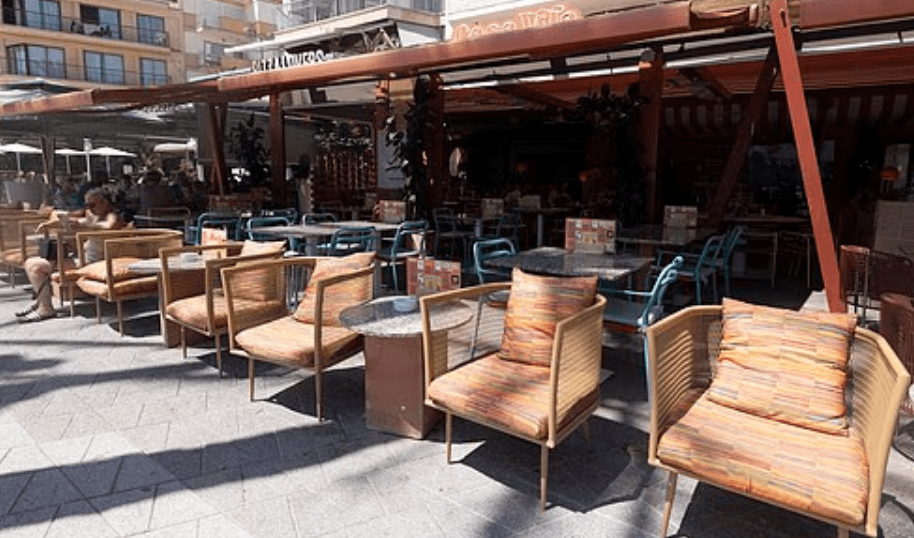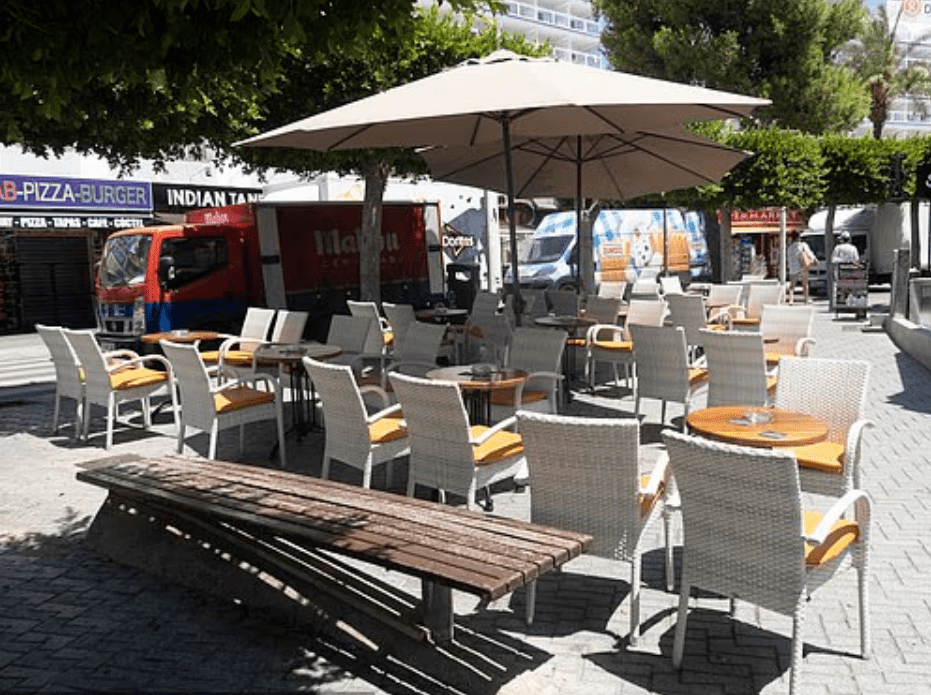Clearwater River, Orofino ID April 2005

I love Idaho. Were it not so remote, I’d consider moving there.
On the other hand… in today’s world, is “remoteness” all that bad? Hmmm…

Clearwater River, Orofino ID April 2005

I love Idaho. Were it not so remote, I’d consider moving there.
On the other hand… in today’s world, is “remoteness” all that bad? Hmmm…
In Orwell’s Animal Farm, the pigs’ chant changed from “Four legs good, two legs bad!” into “Four legs good, two legs better!” and the farm changed forever.
Well, when it comes to airliners, it seems that the latter has become the norm — just substitute “engines” for “legs”, and you get the picture.
Modern engines, we are told, are more efficient and more eco-friendly (in that they burn less fuel and therefore squirt much less of that eeeevil carbon-whatever into the atmosphere), so therefore twin-engined long-haul aircraft are so much more desirable, you see, than those fat and dirty old 707s and 747s.
Amazingly, the oh-so eco-friendly Germans don’t agree (albeit for the wrong reasons), and are keeping some of their 747s:
This four-engine behemoth, first flown commercially in 1970, is no longer financially viable in an era of increasingly-efficient twin-engined jets. The final passenger-configured jumbo was delivered eight years ago, and Boeing has no plans to restart the production line.
But one European airline hasn’t turned its back on the 747 just yet. Germany’s Lufthansa, perceived by many to be aviation’s kings of efficiency, still operates 27 jumbo jets – 19 of the newer 747-8s, and eight older, slightly smaller 747-400s – and is even upgrading some jumbo jet interiors with swanky new Allegris seats as part of a £2bn Lufthansa fleet-wide refit.
Here’s the reason:
Why the lingering attachment? Part of the reason is simple and unromantic economics. According to aviation analysts, operations out of its Frankfurt and Munich hubs are each at take-off slot capacity.
So, with flight numbers capped, Lufthansa really needs its biggest aircraft, and the 364-seat 747s-8s drop neatly between the Airbus A350 (293 seats) and A380 (455 seats).
Yeah, whatever.
I happen to prefer flying aboard the older 747s for one simple reasons, based on the old saw: “Two is one and one is none.” Using that as a yardstick, I happen to think that four engines are safer than two.
I know, I know; according to the cognoscenti, modern twin-engined airliners can stay in the air if one engine breaks. But to my way of thinking, if one engine can break, its identical twin can also break, for the same reason. I know the chances are not high, statistically speaking; but the chances are not zero.
And forgive me for being a little skittish about my transportation suddenly turning into a lawn dart at 28,000 feet. Under those circumstances I’d like the odds to be somewhat more stacked on my side, and four engines are not going to fail simultaneously, or even sequentially.
I know that this is more of a moot point nowadays, when it appears that my transatlantic flying days are pretty much over. And annoyingly, according to a cursory study, Luftwaffe Lufthansa is persisting with the European Airbus 330 for DFW-FRA. (Why Frankfurt? Because if you’re going to connect at an airport in Euroland, Frankfurt is as good as LHR or CDG, to name but a couple, and better than MAD or — gawd help us — ROM.)
But the principle remains, because it’s true for any passenger, not just me. So in my opinion, Orwell’s original thesis is true: four legs good, two legs bad.
So… you want to go hunting in southern Africa, do you? Well, see if you can spot the lion:

If it took you longer than five seconds, too bad, you lose.
There is an institution in the British Empire countries known as the “rugby song”. Rugby songs are usually sung in the bus bringing the team home from an away game, or in the pub after the match. Inebriation is very much a requirement, as most of the songs are inevitably bawdy not to say obscene.
One such song is entitled “The Ball Of Kirriemuir“, of which I shall post but the intro, the chorus and a sample verse or three (all from memory):
“Four and twenty virgins came down from Inverness;
When the ball was over, there were four and twenty less — singing:”
Chorus:
“Balls to your partner
Arses to the wall
If ye’ve never been shagged
On a Saturday night
Ye’ve never been shagged at all.”
Verse:
“The village doctor, he was there,
Scalpel in his hand;
And every time the music stopped
He’d circumsize the band — singing:”
Chorus
Verse:
“The vicar’s wife, O she was there
Lying on the floor;
And every time she spread her legs
The suction shut the door — singing:”
Chorus
Verse:
“There was fucking in the doorways,
There was fucking on the stairs;
You couldna’ see the carpet
For the mass of pubic hair — singing:”
Etc.
I know about a dozen verses myself… and there are another thirty, if not more. The song is reputed to have originated in the late 19th century.
But that’s not what I wanted to talk about.
Yesterday’s Landscape pic featured a very pretty little bridge over a wee burn near Kirriemuir, taken by Yours Truly when I was traveling through Scotland several years ago.

And that’s the problem.
You see, having been to Kirriemuir, I can tell you that there’s a problem with the song that made it famous.
It couldn’t have happened.
Now Kirriemuir itself is a lovely little village — quite gorgeous, in fact.

(it hasn’t changed at all since that pic was taken)
But let me tell you: there’s not a single building in the place that would have been large enough to hold a wee bairn’s birthday party, let alone a grand ball / orgy on the scale envisioned in the song. (There are a few industrial warehouses, but they are of very recent vintage and therefore highly unlikely venues.)
There isn’t even a large manor house in the area, unless you count Balintore Castle, which is several miles distant:

…and until quite recently, has been pretty much in ruins for centuries:

You can’t even see Kirriemuir from the castle because of the hilly terrain and perpetual mist. (#ScottishWeather)
As a friend pointed out, if the ball had been held at Balintore, the song would have been entitled: “The Ball At Balintore” which is not only alliteratively pleasing, but also slyly suggestive of the evening’s activities. But it wasn’t.
The only other building of any size in the area — and which is even further away — is Glamis Castle (of Macbeth fame):

…and you can forget any plebeian shenanigans occurring there. (#OwnedByTheRoyalFamily)
So much for the ball at Kirriemuir, then. Wherever it took place, though, I’d love to have been there. (#RedPubicHair #DisgustingOrgy)
One should never meet one’s heroes, lest one be disappointed.
Near Kirriemuir, Scotland October 2017

…devoutly wished:


Spanish officials have admitted that a relentless campaign of anti-tourist protests in Majorca is ‘scaring away visitors’ – with locals claiming some resorts are now ‘completely dead’.
With British holidaymakers seemingly among foreigners turning their backs on the island, its tourism industry is in panic mode as officials overseeing the nightlife sector and tour companies warn that guests no longer feel ‘welcomed’.
The restaurant association president, Juanmi Ferrer, gave a stark warning that the messaging of the protests is ‘scaring visitors away’.
Ya think? Then there’s this priceless bit of wisdom:
Miguel Pérez-Marsá, head of the nightlife association, told Majorca Daily Bulletin: ‘The tourists we’re interested in are being driven away; they don’t feel welcome and are going to other destinations.’
Well, yes; except that those tourists you’re interested in — the hard-drinking, hard-partying Brits and Germans — are the ones who sparked all the protests in the first place.
Rock, meet hard place.


Here’s the ironic part.
I don’t actually blame the locals for trying to end the seemingly-endless summer invasions of their home towns — it’s as true for Amsterdam as it is in Majorca — but if your sole income is pretty much derived from tourists (unlike Amsterdam, for whom tourism is important but not critical), then I guess the full-time residents of the party places just need to endure… or move.
Unsaid in all this is the fact that young people (the partiers and drinkers) are almost by definition going to be louts and sluts when far from home and full of cheap booze, and so of course you can’t expect them to behave themselves. While older tourists may be more desirable socially, the old ‘uns don’t spend anything like what the kids do — unless of course they’re buying themselves a holiday apartment, thus driving up the prices of local real estate and making the place unaffordable to the locals.
See where all this goes?
Equally ironic is the fact that a huge proportion of the local population are greatly dependent on those tourist dollars to stay alive, whether cab drivers, bartenders, waitresses, tour operators or restaurant owners. And they’d all be harmed financially — i.e. bankrupted — as well as the rest who reap the “soft” benefits of tourism such as lower taxes and civic improvements, all made possible by the dollars / pounds / euros of the hated turisti.
Like I said, about those rocks and hard places…